In 2017, the Beijing Municipal Government announced a new round of Beijing Master Plan, in which the spatial structure of the central urban area was reorganized and planned. The space inside 2nd ring road and part of the space outside the 3rd ring road is combined and designated as the core functional area of the capital. It is the space carrier of the national political center, cultural center and international communication center. In the future, a series of measures will be taken to adjust the function and population structure in the core area. Therefore, the investigation and analysis of the current spatial structure of the current core area is very necessary. This study is published and presented in China National Urban Planning Conference 2017.
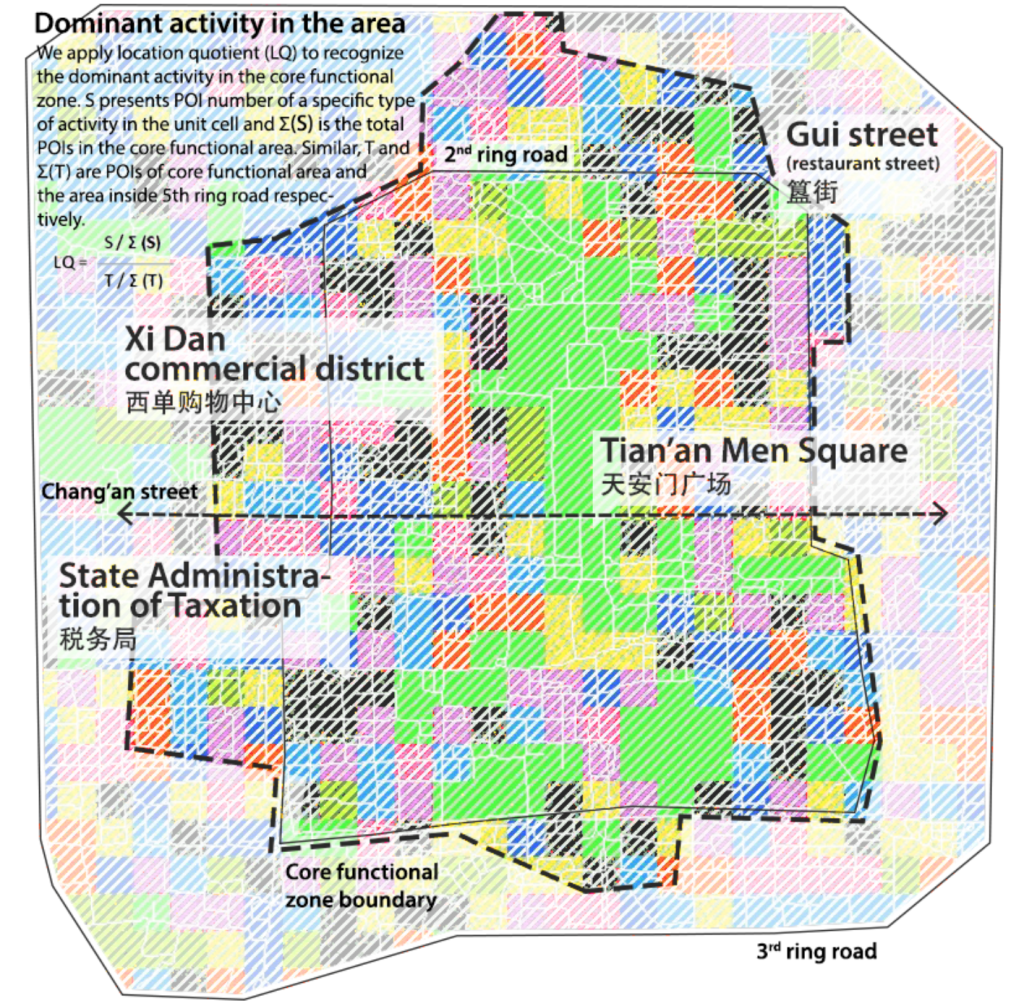
With POI data, this research aims to analyze the spatial distribution characteristics of all kinds of activities inside the 3rd ring road in Beijing. On this basis, several specific functional areas mentioned in the Beijing Master plan have been chosen to have a detailed analysis the internal functional structure and spatial structure, so as to have a more scientific quantitative analysis of the functional structure of the core area.
The first part is to analyze the spatial distribution and aggregation characteristics of 10 kinds of activities inside the 3rd ring road in Beijing through Getis-OrdGi* index. It is found that 9 types of commercial activities except science research institutions have obvious aggregation areas in the core functional area. Finance, office, tourism, shopping and accommodation activities highly concentrate in the city center, which brings a large amount of people to the city center every day. In addition, different activity agglomerations show a various spatial distribution patterns. Among them, tourism, accommodation and restaurant activities highly concentrated at the center area in the core functional area, while shopping activities distribute around the old town area and government offices and hospitals scatter close to the boundary of the 3rd ring road. Finally, from the aspect of the overall layout, the activities inside the core functional area shows an unbalanced distribution pattern. The activity density is much higher in the north and east part than in the south and west.
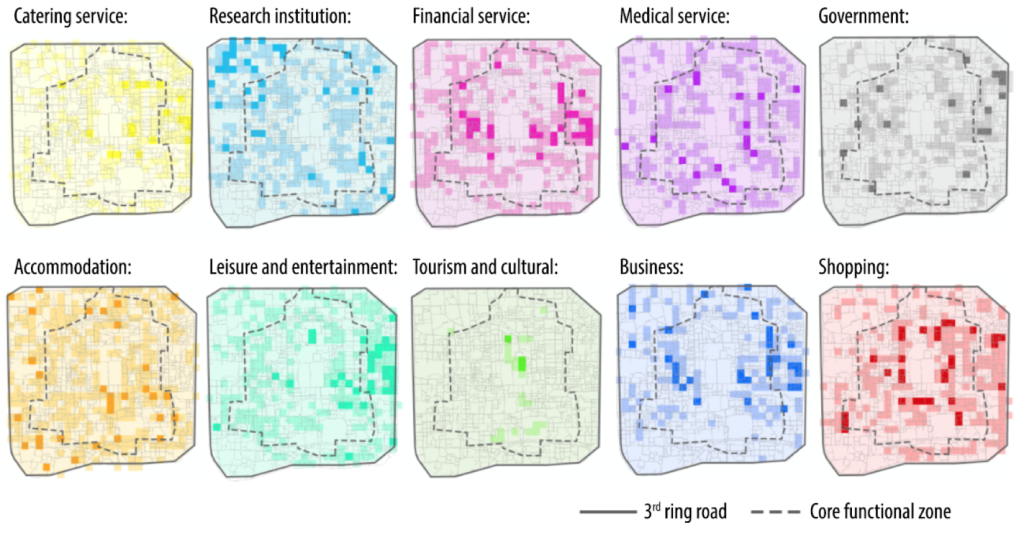
All 10 types of activities are overlapped together and location quotient is applied to recognize the dominant activity in the core functional zone. Location quotient (LQ) is a valuable way of quantifying how concentrated a particular industry, cluster, or demographic group is in an area as compared to the region. The LQ of each activity is calculated with the equation below.

S presents POI number of a specific type of activity in the unit cell and Σ(S) is the total POIs in the core functional area. Similar, T and Σ(T) are POIs of core functional area and the area inside 5th ring road respectively. According to the user group of the activity, the recognition results could be further classified into 3 categories. 60.8% of land in core functional zone is open to the public, including shopping activity space, accommodation activity space, medical-related activity space and so on. 22.5% of land is occupied by companies and institutions and only open to the staff. Only 16.7% of land is used as government and administration space, which is not open to the public.
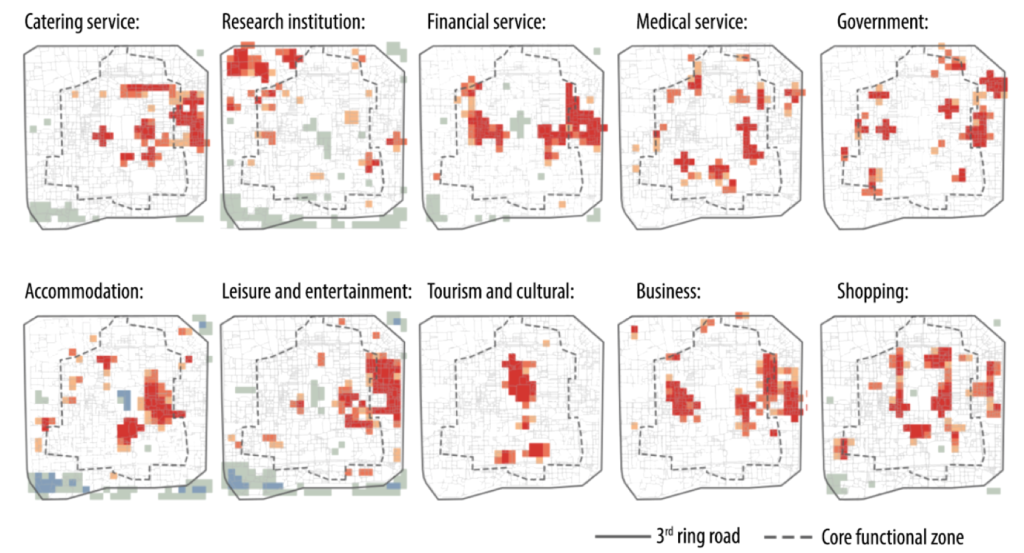
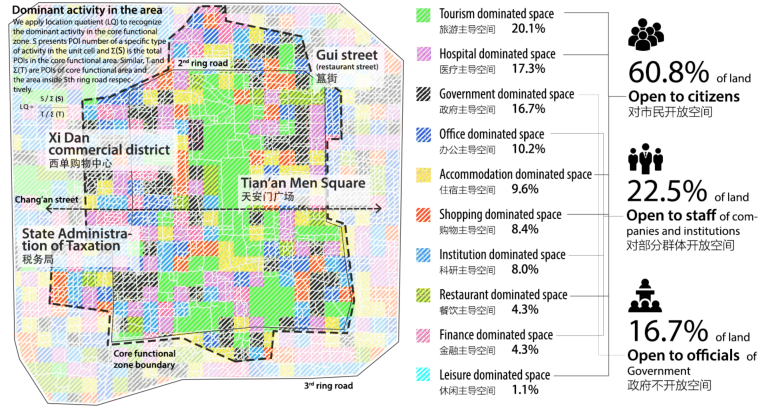
The second part is the analysis of the internal structure of 4 specific key areas mentioned in the master plan. Xidan and Wangfujing district, as representatives of traditional commercial districts, have similar development orientations in the master plan, but in fact they actually have different functions and spatial structures. Wangfujing commercial district take shopping and accommodation as its leading industry, and presents a linear distribution pattern in space. Majority of tourists across the country will choose hotels near Wangfujing to stay in Beijing. On the contrary, shopping activities concentrate at some specific areas in Xidan commercial district, and government offices and financial services also play dominant roles in the district.
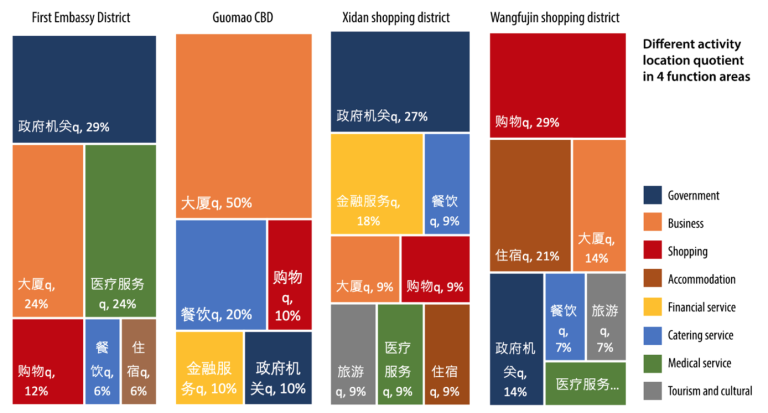
Another two key areas mentioned in the master plan are Guomao CBD and the First Embassy area, both of which are defined as important nodes of international communication in the master plan. Among them, the office activities in Guomao CBD occupy the absolute dominance, and offices cluster at particular spots in the area. The first embassy area has more comprehensive functions including medical, office, government, and shopping activities, which are organized in a linear shape.
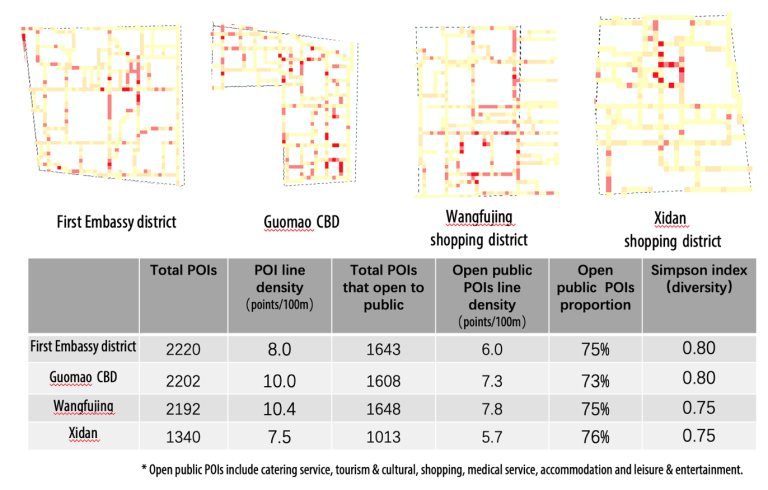
To sum up, considering the fact that most hospitals mainly serve people across China, companies in Guomao CBD organize worldwide investments and shopping malls like Xidan and Dongdan are also attractions for tourists, the core functional zone actually offers services to large amount of people from different backgrounds and countries every day. Thus, the core functional zone serves more like a cultural, economic and medical center.